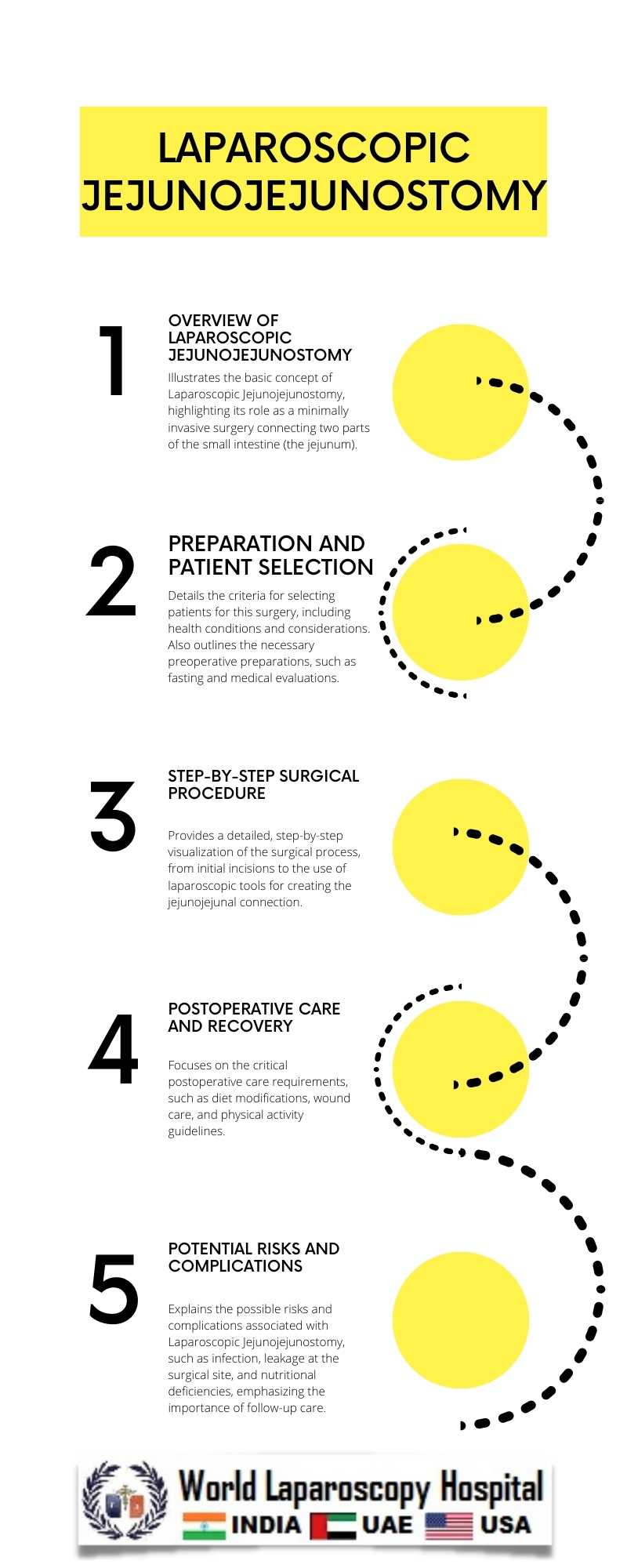Advancements in Minimally Invasive Surgery: Laparoscopic Jejunojejunostomy Techniques and Outcomes
Advancements in Minimally Invasive Surgery: Laparoscopic Jejunojejunostomy Techniques and Outcomes
The landscape of surgical procedures has been dramatically transformed by the evolution of minimally invasive techniques, particularly in the realm of gastrointestinal surgeries. Among these, the laparoscopic jejunojejunostomy stands out as a pinnacle of surgical innovation, offering a blend of reduced invasiveness and enhanced patient outcomes.

Historical Perspective and Evolution
The journey towards minimally invasive surgeries began in the late 20th century, revolutionizing the way abdominal surgeries were performed. Traditional open surgeries, characterized by large incisions and extended recovery times, have gradually given way to laparoscopic techniques. Laparoscopic jejunojejunostomy, a procedure that involves the surgical alteration of the small intestine, is one such technique that has benefited from this shift.
Technical Advancements in Laparoscopic Jejunojejunostomy
The technique involves creating an anastomosis between two parts of the jejunum, usually performed for conditions like intestinal obstructions or after gastric bypass surgery. The advent of high-definition cameras, refined instrumentation, and improved surgical techniques have significantly enhanced the precision of this procedure. Surgeons can now operate with greater accuracy, reducing the risk of complications and improving surgical outcomes.
Reduced Trauma and Enhanced Recovery
One of the most significant benefits of laparoscopic jejunojejunostomy is the minimal trauma to the patient. Smaller incisions result in reduced postoperative pain, lesser risk of wound infections, and faster healing. This approach significantly shortens hospital stays and accelerates the return to normal activities, which is a boon for patient quality of life.
Improved Outcomes and Complication Management
Studies have consistently shown that laparoscopic jejunojejunostomy leads to better outcomes compared to traditional open surgery. There is a marked reduction in complications like postoperative ileus, adhesions, and hernias. Even in the face of complications, the minimally invasive nature of the procedure allows for more straightforward management and resolution.
Future Directions and Research
The field of laparoscopic surgery is continuously evolving, with research focused on further reducing invasiveness and enhancing patient safety. Robotic surgery, telesurgery, and the integration of artificial intelligence are areas that hold promise for the future of laparoscopic jejunojejunostomy. These technologies aim to provide even greater precision and control, potentially leading to even better surgical outcomes.
Conclusion
The advancements in laparoscopic jejunojejunostomy techniques represent a significant leap forward in the field of minimally invasive surgery. By offering a combination of reduced physical trauma and improved recovery times, this approach not only enhances patient outcomes but also marks a progressive step in surgical practices. As technology continues to evolve, the future of laparoscopic jejunojejunostomy looks promising, with the potential to offer even more effective and patient-friendly surgical solutions.
The landscape of surgical procedures has been dramatically transformed by the evolution of minimally invasive techniques, particularly in the realm of gastrointestinal surgeries. Among these, the laparoscopic jejunojejunostomy stands out as a pinnacle of surgical innovation, offering a blend of reduced invasiveness and enhanced patient outcomes.

Historical Perspective and Evolution
The journey towards minimally invasive surgeries began in the late 20th century, revolutionizing the way abdominal surgeries were performed. Traditional open surgeries, characterized by large incisions and extended recovery times, have gradually given way to laparoscopic techniques. Laparoscopic jejunojejunostomy, a procedure that involves the surgical alteration of the small intestine, is one such technique that has benefited from this shift.
Technical Advancements in Laparoscopic Jejunojejunostomy
The technique involves creating an anastomosis between two parts of the jejunum, usually performed for conditions like intestinal obstructions or after gastric bypass surgery. The advent of high-definition cameras, refined instrumentation, and improved surgical techniques have significantly enhanced the precision of this procedure. Surgeons can now operate with greater accuracy, reducing the risk of complications and improving surgical outcomes.
Reduced Trauma and Enhanced Recovery
One of the most significant benefits of laparoscopic jejunojejunostomy is the minimal trauma to the patient. Smaller incisions result in reduced postoperative pain, lesser risk of wound infections, and faster healing. This approach significantly shortens hospital stays and accelerates the return to normal activities, which is a boon for patient quality of life.
Improved Outcomes and Complication Management
Studies have consistently shown that laparoscopic jejunojejunostomy leads to better outcomes compared to traditional open surgery. There is a marked reduction in complications like postoperative ileus, adhesions, and hernias. Even in the face of complications, the minimally invasive nature of the procedure allows for more straightforward management and resolution.
Future Directions and Research
The field of laparoscopic surgery is continuously evolving, with research focused on further reducing invasiveness and enhancing patient safety. Robotic surgery, telesurgery, and the integration of artificial intelligence are areas that hold promise for the future of laparoscopic jejunojejunostomy. These technologies aim to provide even greater precision and control, potentially leading to even better surgical outcomes.
Conclusion
The advancements in laparoscopic jejunojejunostomy techniques represent a significant leap forward in the field of minimally invasive surgery. By offering a combination of reduced physical trauma and improved recovery times, this approach not only enhances patient outcomes but also marks a progressive step in surgical practices. As technology continues to evolve, the future of laparoscopic jejunojejunostomy looks promising, with the potential to offer even more effective and patient-friendly surgical solutions.
1 COMMENTS
Dr. Suresh Karki
#1
Jan 4th, 2024 8:18 am
Advancements in laparoscopic jejunojejunostomy techniques signify a major leap in minimally invasive surgery. Combining reduced physical trauma and improved recovery times, this approach enhances patient outcomes and marks a progressive step in surgical practices. As technology evolves, the future of laparoscopic jejunojejunostomy looks promising, with the potential to offer even more effective and patient-friendly surgical solutions.
| Older Post | Home | Newer Post |

